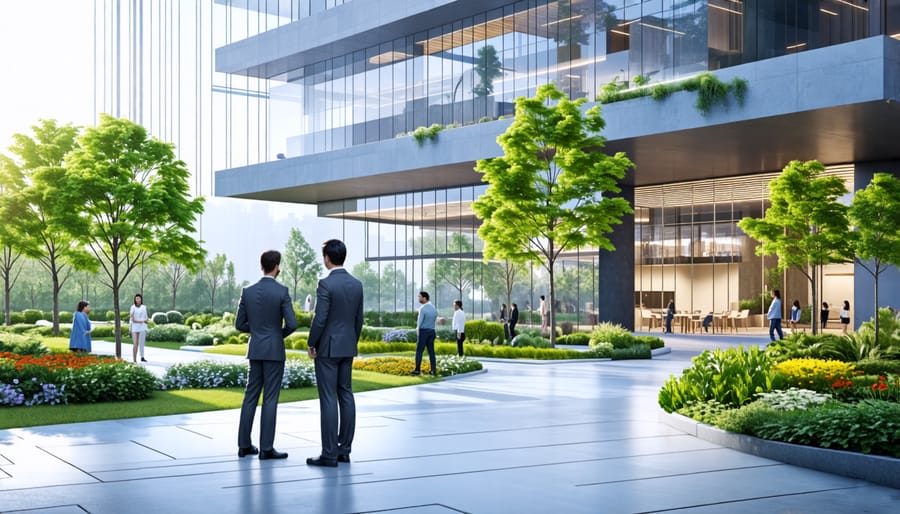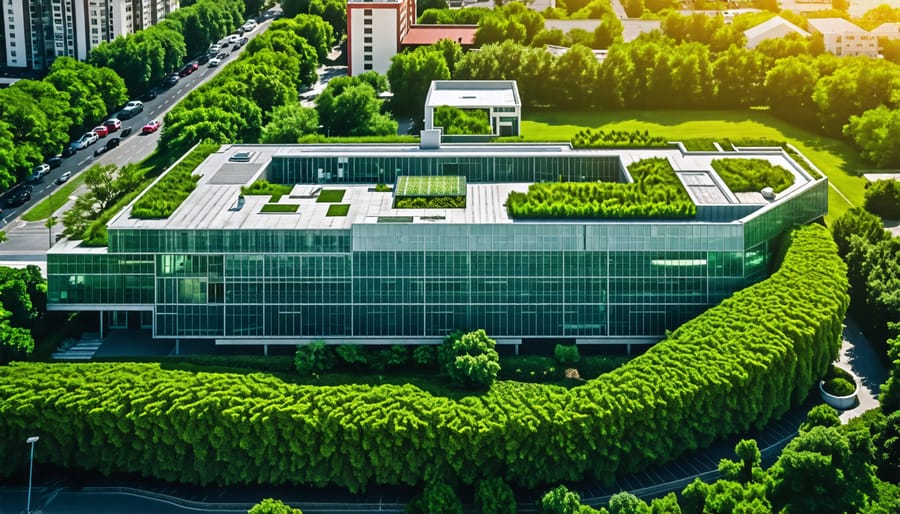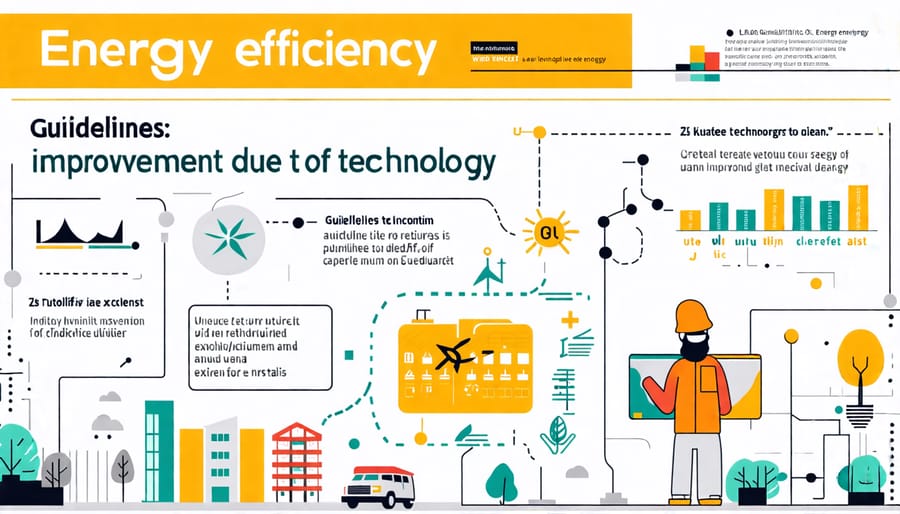Integrate resilient technology in construction by prioritizing flexibility in architectural design, ensuring structures can withstand extreme weather conditions. Enhance energy efficiency through smart systems that adapt to environmental changes, optimizing resource use and reducing costs. Streamline project management with advanced software tools that offer real-time data analytics, improving decision-making and project outcomes. Emphasize collaboration among architects, engineers, and stakeholders to implement resilient technologies effectively, fostering innovation and sustainability in every project.
Understanding Resilient Technology
Defining Resilient Technology
Resilient technology in construction refers to systems and solutions designed to withstand environmental stresses, economic challenges, and operational demands over time. This approach enhances the durability and flexibility of construction projects, ensuring that buildings can adapt to and recover from various adversities, such as natural disasters and climate change. By integrating advanced materials, smart systems, and innovative design principles, resilient technology bolsters the construction industry’s ability to sustainably manage resources and reduce downtime.
A notable example is the use of seismic-resistant materials and structural engineering practices, which enable buildings to endure earthquakes without significant damage. Additionally, incorporating renewable energy systems like solar panels and wind turbines exemplifies resilience by providing consistent power supply, even in adverse conditions. As the industry evolves, the adoption of construction technology trends such as smart sensors and modular construction further demonstrates the potential of resilient technology in improving project management and energy efficiency, ultimately supporting a more sustainable future.
Significance for Industry Professionals
Understanding and integrating resilient technology is crucial for architects, engineers, and project managers as it directly informs their ability to design and implement structures that withstand diverse environmental challenges. With climate change increasing the frequency and severity of natural events, industry professionals must adopt practices that ensure the longevity and structural integrity of their projects. Resilient technology not only enhances energy efficiency but also supports sustainable building practices, aligning with modern environmental standards and regulations. By leveraging advanced materials and innovative design methodologies, professionals can significantly reduce maintenance costs and improve safety outcomes. Furthermore, a deep understanding of resilient technology equips decision-makers with the tools necessary for proactive risk management, fostering strong project investments and community trust. For architects and engineers, this understanding translates into a competitive advantage, enabling them to create buildings that meet both current demands and future uncertainties. Project managers benefit through improved project timelines and cost-efficiency, ultimately leading to successful project execution in increasingly unpredictable environments.
Resilient Technology in Architectural Design

Innovative Design Approaches
Resilient technology has revolutionized architectural design by promoting sustainability, adaptability, and efficiency in construction projects. One innovative approach is the integration of modular construction techniques. These methods utilize prefabricated components that can be easily assembled and reconfigured, providing flexibility and reducing construction timelines. By allowing for quick adaptation to changing environmental conditions or client needs, modular designs demonstrate a resilient approach to building architecture.
Additionally, the use of smart materials is gaining traction. These materials, such as self-healing concrete and thermochromic windows, enhance a building’s endurance by responding dynamically to environmental changes. This adaptability fosters an architectural resilience that can significantly prolong the lifespan of structures while reducing maintenance costs.
Incorporating advanced data analytics and IoT technologies into building management systems also exemplifies resilient design. These systems optimize energy use by collecting and analyzing real-time data, enabling proactive maintenance and efficient resource management. As a result, buildings can significantly reduce their carbon footprint and operational expenses.
These innovative design approaches illustrate how resilient technology is transforming architecture, ensuring that structures are not only durable but also responsive and sustainable. As the industry evolves, embracing these resilient technologies will be crucial for construction professionals aiming to create future-ready buildings that meet environmental and economic demands.
Case Study: Green Buildings
The Edge, located in Amsterdam, sets an exemplary benchmark in green building design by seamlessly integrating resilient technology. This state-of-the-art structure optimizes energy efficiency and sustainability through the use of advanced systems and materials. Its innovative approach includes an intelligent LED lighting setup responsive to occupancy, significantly reducing energy waste. Moreover, the implementation of a sophisticated rainwater collection and reuse system enhances water conservation, showcasing a model for similar projects worldwide.
The building’s architects and engineers have successfully maximized natural light using strategically placed glass partitions and solar panels, which not only power the building but also contribute to its ecological footprint. Through expert interviews, it was revealed that the collaborative use of resilient technology in The Edge has resulted in a significant decrease in operational costs and CO2 emissions, demonstrating its vital role in modern construction. Such projects underline the critical importance of integrating resilient technology to achieve sustainable, efficient, and future-ready infrastructure.
The Role of Resilient Technology in The Energy Industry
Energy Efficiency and Resilience
Resilient technology plays a pivotal role in enhancing energy efficiency within building infrastructures. By integrating advanced systems and sustainable materials, modern construction projects are able to significantly reduce energy consumption while increasing durability. One exemplary application of this approach can be observed in projects like Starbucks’ energy-efficient modular store, which demonstrates the seamless synergy between resilience and sustainability.
This concept is further emphasized through energy-efficient building designs that incorporate smart technology. These smart systems autonomously adjust heating, cooling, and lighting based on occupancy and environmental conditions, optimizing energy use and minimizing waste. Moreover, the integration of renewable energy sources, such as solar and wind, allows buildings to maintain operations even in adverse conditions, exemplifying true resilience.
Insights from industry experts reveal that employing energy-efficient technologies not only mitigates environmental impact but also delivers economic benefits. Reduced operational costs and increased property value are common outcomes of implementing such technologies, underscoring their viability in the competitive construction market. As the industry progresses, adopting resilient technology will become crucial for professionals seeking to create sustainable and robust building environments, providing both environmental and financial returns.
Expert Insights
Industry experts highlight the transformative potential of resilient technology in advancing energy efficiency within construction. Dr. Alice Nguyen, a renowned sustainability engineer, emphasizes the integration of smart grid technologies, which allow buildings to dynamically adjust energy consumption based on real-time data. This adaptability, she notes, is crucial for maximizing resource use and minimizing waste in building operations.
John Taylor, an architect specializing in sustainable design, points to the growing use of weather-resistant materials that not only withstand environmental stressors but also contribute to energy conservation. “Incorporating materials that maintain thermal stability can drastically reduce reliance on HVAC systems,” he explains, underscoring the importance of holistic design strategies in enhancing efficiency.
Meanwhile, Sarah Patel, a project manager with over two decades in renewable energy projects, advocates for the inclusion of resilient infrastructure in urban planning. She argues that resilient technology’s ability to maintain functionality during adverse conditions is pivotal for achieving long-term energy security. “By designing systems that anticipate and adapt to disruptions, we create a more reliable energy framework,” Patel asserts.
These insights collectively suggest that investing in resilient technology is not merely a trend but a strategic imperative for the future of energy-efficient construction, offering a robust pathway to sustainability and operational excellence.

Challenges and Opportunities

Current Challenges
Adopting resilient technology in construction presents significant challenges for industry professionals. One primary concern is the initial investment required, as these advanced systems can be cost-prohibitive for small to medium-sized firms. This financial hurdle is often compounded by a lack of clarity on the long-term return on investment, making decision-makers hesitant to fully commit. Moreover, integrating resilient technologies involves navigating complex regulatory landscapes, which can vary significantly across regions and impact project timelines and costs.
Another critical challenge is the need for specialized training. As resilient technologies evolve, professionals must continually update their expertise, which necessitates ongoing education and development programs. This requirement can be resource-intensive and demands a shift in traditional skillsets, posing a barrier for some construction teams.
Lastly, there’s the challenge of ensuring seamless technology integration with existing systems. This complex task requires forward-thinking strategies and collaboration across different stakeholders to achieve objectives like reducing building emissions. Balancing these elements while maintaining project efficiency remains a formidable task in the construction industry.
Opportunities and Future Trends
Resilient technology presents significant opportunities for the construction industry as it seeks to adapt to changing environmental conditions and regulatory standards. One emerging trend is the integration of smart materials that can autonomously respond to environmental changes, enhancing durability and energy efficiency in buildings. Additionally, advancements in modular construction, incorporating resilient materials, enable faster, more sustainable construction processes that can withstand natural disasters.
The adoption of digital twin technology is another promising trend. By creating virtual replicas of physical structures, construction professionals can simulate and analyze building performance under various conditions, leading to more resilient designs. As urbanization continues, the demand for climate-resilient infrastructure is escalating, driving innovation in resilient urban planning and development.
Furthermore, the use of AI and machine learning in monitoring and predictive maintenance can revolutionize facility management, helping to preemptively address potential vulnerabilities. As these technologies evolve, construction firms that prioritize resilience will not only enhance safety and sustainability but also gain a competitive edge in an increasingly demanding market.
Conclusion
The transformative potential of resilient technology in construction cannot be overstated. By integrating resilient solutions, the industry is not only addressing immediate challenges posed by environmental stresses but also paving the way for sustainable, long-term advancements. Throughout this article, we explored the impressive strides the sector is making toward robust, adaptable designs, pioneering efficiency improvements, and enhanced project management. With insights from expert interviews and detailed case studies, we’ve illustrated how modern technologies are driving groundbreaking changes across the construction landscape.
Adopting resilient technologies extends beyond mere adaptation; it represents a strategic evolution toward using smart materials, advanced analytics, and innovative design techniques. Such integration significantly enhances energy efficiency, structural integrity, and resource management. Furthermore, these technologies empower construction professionals and industry decision-makers to implement climate resilience strategies that fortify infrastructure against future uncertainties.
In conclusion, as architects, engineers, and project managers harness these tools, the construction industry steps confidently into a new era of innovation and resilience. By prioritizing and investing in these transformative technologies today, we are building a foundation for a more secure, sustainable, and efficient tomorrow.

